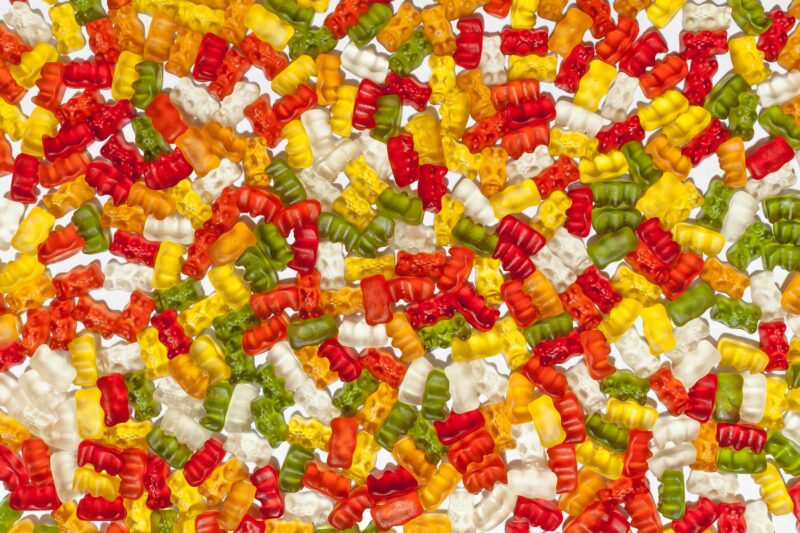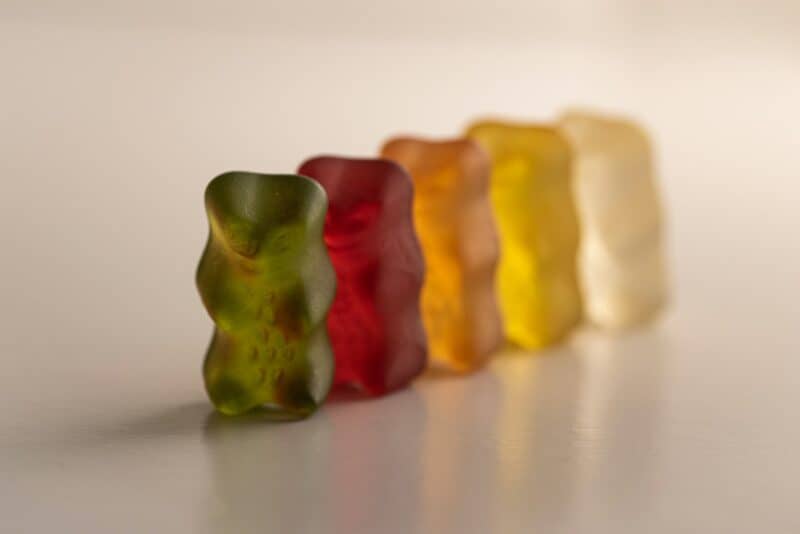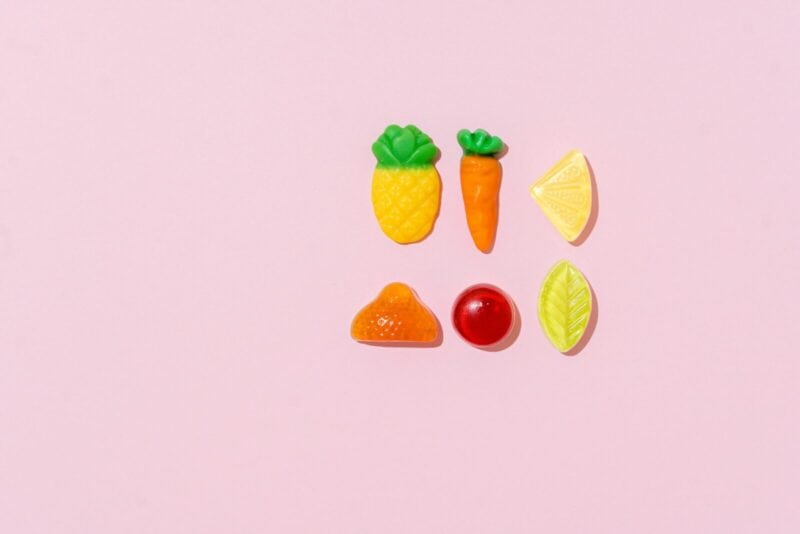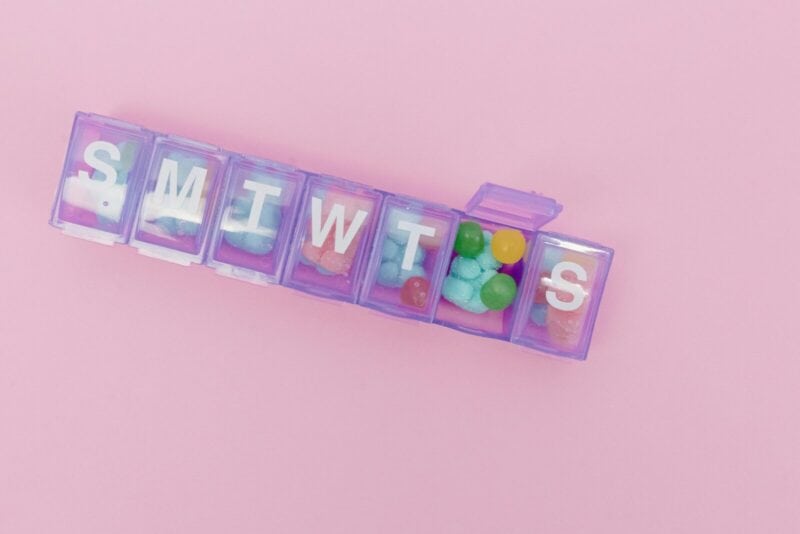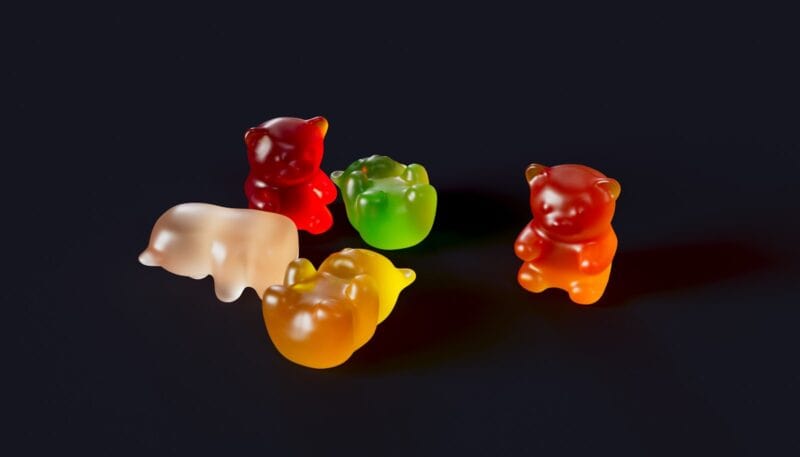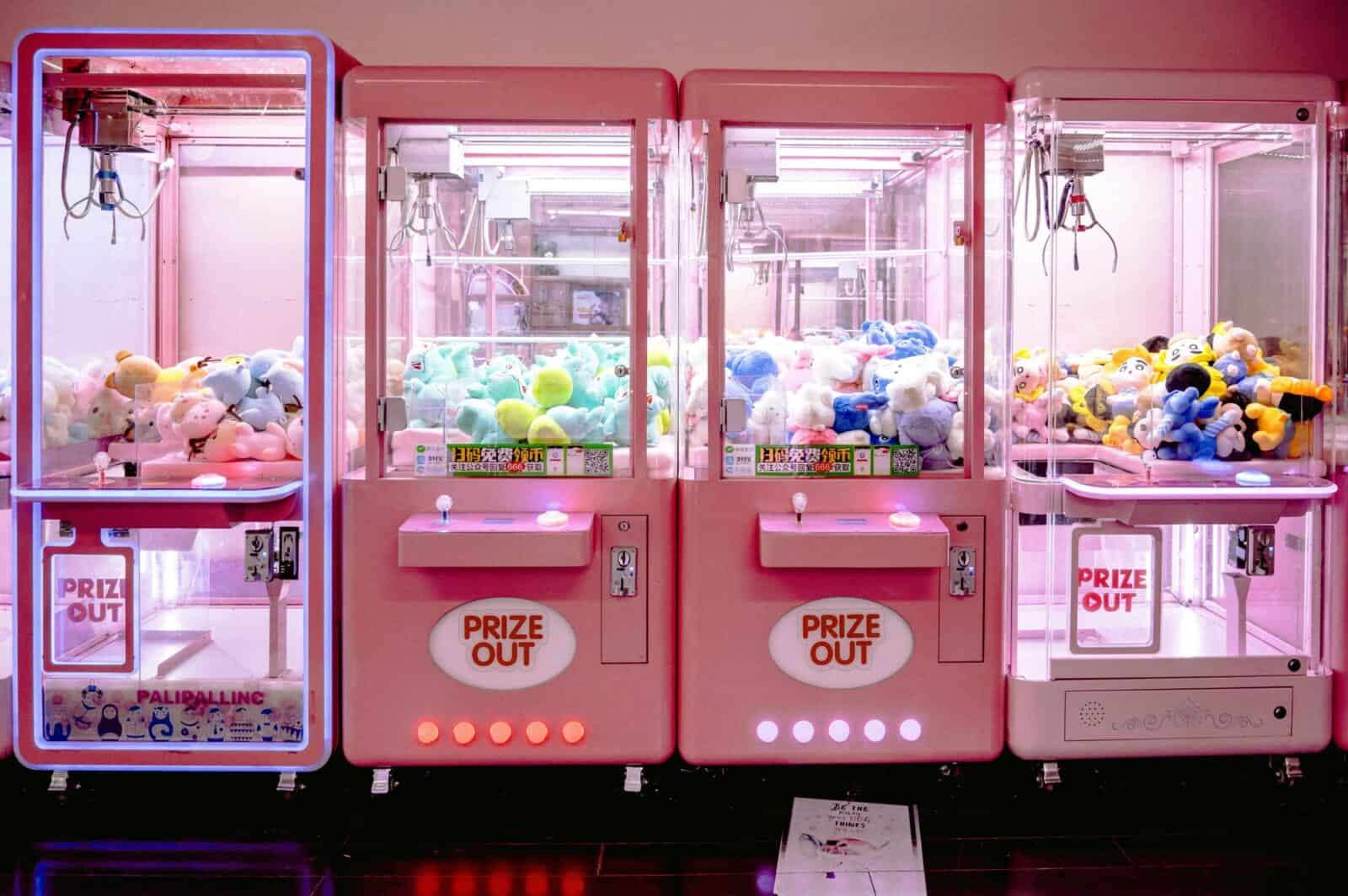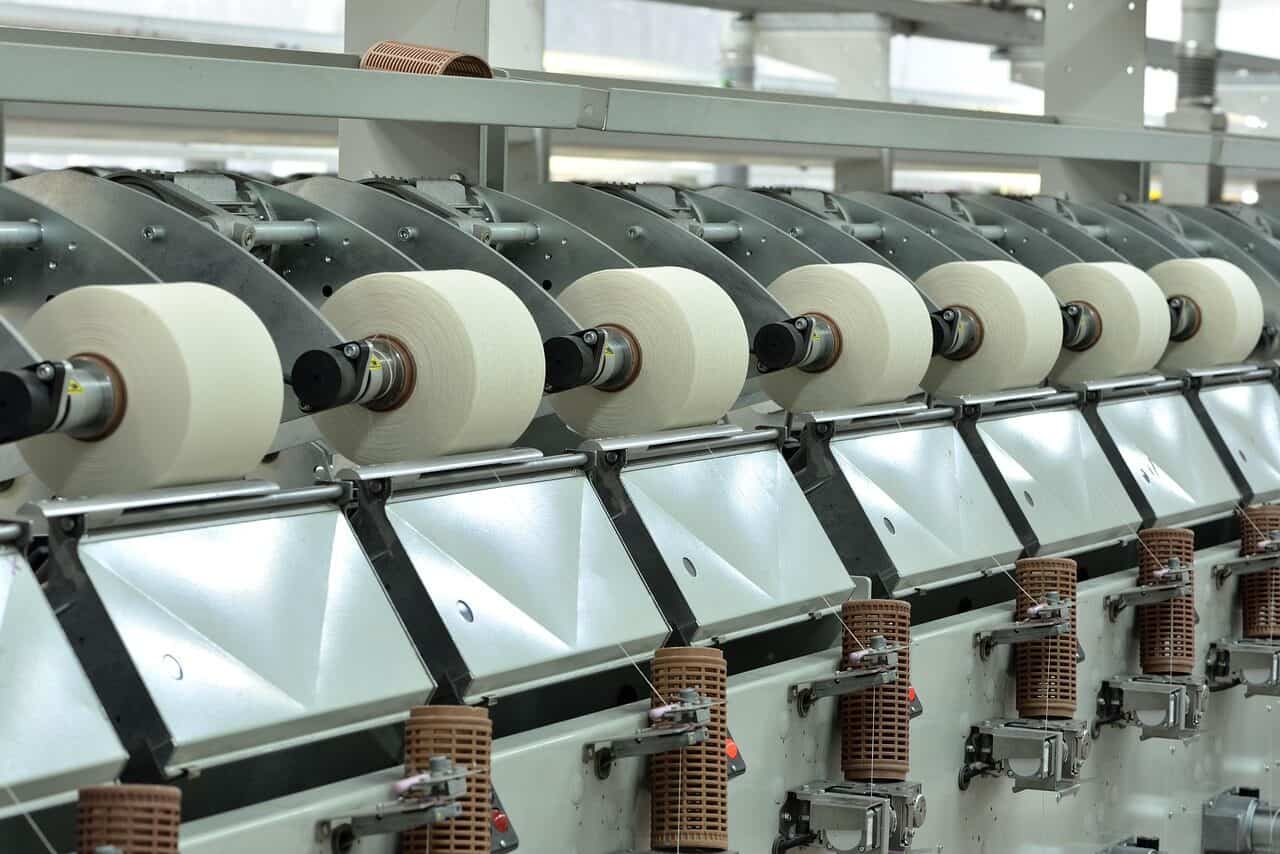إنتاج الشركة المصنعة للدببة الصمغية: دليل المصنعين المحترفين
هل ترغب في تحويل فكرة منتجك إلى علكة الأكثر مبيعاً؟ تتضمن الرحلة من الفكرة إلى أرفف المتاجر علوم الأغذية والهندسة الدقيقة والشراكات الذكية. ينمو سوق العلكة في جميع أنحاء العالم بسرعة مذهلة، متجاوزاً الحلوى البسيطة إلى مجال المكملات الغذائية الصحية التي تقدر بمليارات الدولارات. ولكي تنجح، تحتاج إلى أكثر من مجرد فكرة رائعة؛ فأنت بحاجة إلى فهم كيفية عمل الإنتاج وكيفية اختيار الشركة المصنعة المناسبة لصناعة الحلوى الصمغية. هذا الدليل هو خارطة الطريق الكاملة الخاصة بك، باستخدام خبرتنا الحقيقية في هذا المجال لشرح عملية التصنيع بأكملها، بدءًا من إنشاء الوصفة وحتى التعبئة النهائية.
صناعة العلكة الحديثة
قبل النظر إلى كيفية عمل الإنتاج، من المهم فهم السوق. لم يعد سوق الحلوى الصمغية جزءًا من قسم الحلوى فقط، بل أصبح قوة رئيسية في مجالي الحلوى والصحة والعافية. وهذا يخلق فرصاً هائلة لأصحاب الأعمال الجديدة والعلامات التجارية الحالية.
الأعمال المتنامية
هل تساءلت يومًا كيف نمت حلوى الدببة الصمغية البسيطة من حلوى بسيطة إلى صناعة تدرّ مليار دولار تشمل كل شيء من حلوى الأطفال إلى المكملات الغذائية الصحية القوية؟ الإجابة هي ما يريده العملاء. تقدم العلكة طريقة لذيذة وسهلة وممتعة لتناول الفيتامينات والمعادن والمكونات المفيدة الأخرى.
تدعم أرقام السوق هذا الاتجاه. فوفقًا لتقرير صدر مؤخرًا عن شركة Grand View Research، بلغت قيمة سوق الفيتامينات الصمغية العالمية أكثر من 7.3 مليار دولار ومن المتوقع أن ينمو بمعدل 101 تيرابايت و3 تيرابايت تقريبًا سنويًا على مدار السنوات العشر القادمة. ويأتي هذا النمو نتيجة تركيز الناس بشكل أكبر على الحفاظ على صحتهم ورغبتهم في الحصول على منتجات نباتية ونظيفة والابتكار المستمر في النكهات والفوائد. بالنسبة لأي شخص يتطلع إلى أن يصبح أو يعمل مع شركة تصنيع الدببة الصمغية، فإن هذه البيانات تُظهر فرصة عمل كبيرة ودائمة. سيوضح لك هذا الدليل كيفية الحصول على جزء منها.
عملية التصنيع
إنتاج العلكة التجارية هو علم يتطلب الدقة والاتساق والعمليات واسعة النطاق. ما يمكنك القيام به في المطبخ باستخدام وعاء وقالب يصبح عملية متعددة الخطوات خاضعة للتحكم الشديد في المصنع. ونوضح هنا الخطوات السبع الرئيسية لتصنيع العلكة الاحترافية.
الخطوة 1: الخلط والطبخ
هذا هو المكان الذي يتم فيه بناء أساس الصمغ. تبدأ العملية بخلط المكونات الرئيسية في حاويات كبيرة ساخنة. تتكون القاعدة عادةً من مزيج من الماء والمحليات وعامل التبلور. يتم قياس المحليات مثل شراب الذرة، الذي يمنع السكر من تكوين بلورات، والسكر العادي بعناية. ثم يتم طهي هذه المكونات إلى درجة حرارة محددة، غالباً ما تكون أكثر من 115 درجة مئوية (240 درجة فهرنهايت)، لفترة زمنية محددة. والهدف من ذلك هو الوصول إلى مستوى بريكس دقيق - وهو مقياس لمحتوى السكر في المحلول - والذي يحدد النشاط المائي النهائي و العمر الافتراضي للعلكة. يُطلق على هذه القاعدة السائلة اسم الملاط.
الخطوة 2: إضافة المكونات النشطة والنكهات
بمجرد أن يصل الملاط إلى درجة الحرارة والسماكة المستهدفة، يتم تبريده قليلاً قبل إجراء الإضافات الأكثر أهمية. وهنا تتحول قاعدة الحلوى البسيطة إلى منتج وظيفي. هنا، نقوم بخلط المكونات النشطة (مثل الفيتامينات أو المعادن أو المستخلصات النباتية) والألوان والنكهات الآمنة للطعام. تتطلب هذه الخطوة خبرة، حيث إن العديد من المكونات النشطة، مثل بعض البروبيوتيك والفيتامينات، حساسة للحرارة. يجب أن يكون الملاط بارداً بما يكفي لحماية هذه المكونات ولكن يجب أن يكون دافئاً بما يكفي ليبقى سائلاً للمرحلة التالية.
الخطوة 3: الوضع في القوالب
هذا هو المكان الذي تحصل فيه العلكة على شكلها الشهير. يتم نقل الملاط السائل الساخن إلى آلة الإيداع. تتميز هذه الآلة بدقة مذهلة، حيث تحتوي على فوهات تضع كمية محددة من الطين في آلاف القوالب في نفس الوقت. ومن واقع خبرتنا، فإن هذه المرحلة تخلق تجربة حسية رائعة: الصوت الآلي الثابت الذي يصدره المودع، ورائحة الفواكه الدافئة التي تملأ منطقة الإنتاج، والمشهد المذهل لصفوف لا نهاية لها من القوالب المثالية اللامعة العلكة التي يتم صنعها. الأساليب المبكرة المستخدمة خطوط النشا المغولية, حيث يتم ضغط القوالب في صواني من نشا الذرة. أما اليوم، فيفضل العديد من المصنعين، بما في ذلك نحن، القوالب الخالية من النشا المصنوعة من السيليكون أو المعدن للحصول على نظافة أفضل وتغييرات أسرع وتفاصيل أكثر وضوحًا.
الخطوة 4: التبريد والإعداد
العلكة المصنوعة حديثًا ليست جاهزة بعد. يتم نقلها من المستودع إلى أنفاق تبريد طويلة أو غرف إعداد خاصة. يتم التحكم في هذه البيئات بصرامة من حيث درجة الحرارة والرطوبة. لا تتعلق هذه الخطوة بالتبريد فقط؛ بل هي عملية تثبيت حرجة حيث يتصلب عامل التبلور، سواء كان الجيلاتين أو البكتين، ويشكل هيكله النهائي. يمكن أن تستغرق هذه العملية من 24 إلى 48 ساعة وتؤثر بشكل مباشر على القوام النهائي للصمغ من الطري جداً إلى القوام المتماسك والمُرضي الذي يتوقعه العملاء.
الخطوة 5: الإزالة من القوالب والتشطيب
بعد التثبيت، تصل العلكة إلى شكلها الصلب وتصبح جاهزة للإخراج من قوالبها. في نظام قوالب النشا، يتم قلب الصينية بالكامل، ويتم فصل العلكة عن النشا باستخدام الاهتزاز ونفث الهواء. مع القوالب الخالية من النشا، غالبًا ما يتم إخراج العلكة تلقائيًا. بمجرد إزالتها تكون العلكة “نيئة”. فهي لزجة وتلتصق ببعضها البعض. ولمنع ذلك، يتم إدخالها في بهلوان التشطيب حيث يتم تغليفها بطبقة خفيفة. يمكن أن تكون هذه الطبقة طبقة رقيقة من الزيت الآمن للطعام للحصول على لمسة نهائية لامعة أو توضع في السكر أو بلورات الأحماض الحامضة للحصول على سطح لامع.
الخطوة 6: مراقبة الجودة
قبل أن يغادر أي منتج خط الإنتاج، يخضع لمراقبة صارمة للجودة. وهذه عملية متعددة الأجزاء. وتشمل الفحص البصري بحثاً عن أي مشاكل، والمرور عبر أجهزة الكشف عن المعادن للتأكد من عدم وجود أي مواد غريبة، واختبار العينات بانتظام في مختبر داخلي أو خارجي. ونقوم باختبار وزن العلكة وقوامها ونشاطها المائي، والأهم من ذلك، قوة المكونات النشطة للتأكد من أن ما هو مكتوب على الملصق موجود في العلكة.
الخطوة 7: التعبئة والتغليف
الخطوة الأخيرة هي التعبئة والتغليف. يتم تغذية العلكة الجاهزة والمعتمدة في خطوط التعبئة الآلية أو التعبئة في زجاجات أو خطوط التعبئة. تتأكد العدادات عالية السرعة وأجهزة قياس الوزن من أن كل زجاجة أو كيس يحتوي على العدد الصحيح من العلكة. ثم يتم غلق العبوات ووضع العلامات عليها وترميزها وترميزها للتتبع وتعبئتها في صناديق رئيسية للشحن. يمكن أن يتراوح ذلك من التعبئة والتغليف بالجملة للشركات الأخرى إلى المنتجات الاستهلاكية الجاهزة للبيع بالتجزئة والمستقرة على الرفوف.
معدات التصنيع الأساسية
يتطلب الانتقال من دفعة اختبار صغيرة إلى إنتاج كامل النطاق استثمارًا كبيرًا في المعدات الصناعية المتخصصة. فالآلات المناسبة ضرورية لضمان سلامة المنتج واتساقه والكفاءة اللازمة لتحقيق الربحية.
من المطبخ إلى أرضية المصنع
بينما قد تبدأ شركة صغيرة ناشئة باستخدام أواني الفرن وقوالب السيليكون، فإن الشركة المصنعة للدببة الصمغية المحترفة تعمل على مستوى مختلف تمامًا. تم تصميم معدات من الدرجة الصناعية لإنتاج كميات كبيرة، والتحكم الدقيق في كل متغير، والامتثال لمعايير سلامة الأغذية مثل cGMP (ممارسات التصنيع الجيدة الحالية).
تفاصيل الماكينات الأساسية
إن اختيار المعدات المناسبة هو قرار استراتيجي يؤثر على القدرة الإنتاجية وجودة المنتج والمرونة التشغيلية. وفيما يلي تفصيل للآلات الأساسية التي تشكل العمود الفقري للمصنع الحديث خط إنتاج العلكة.
| المعدات | الوظيفة الأساسية | الاعتبارات الرئيسية للشركة المصنعة |
| طباخ صناعي/طباخ نفاث/طباخ نفاث | يُطهى الطين الصمغي بسرعة وبشكل متساوٍ إلى درجات حرارة دقيقة. | السعة (لتر/ساعة)، وطريقة التسخين، ومستوى الأتمتة. |
| صهاريج الخلط والتخزين | يمزج المكونات ويحافظ على الملاط في درجة حرارة ثابتة قبل الترسيب. | نظام تقليب مغطى بغلاف للتحكم في درجة الحرارة. |
| المودع الصمغي | تقسم بدقة وتوضع الملاط السائل في القوالب. | عدد الفوهات، ودقة حجم الترسيب، والتوافق مع أنواع القوالب. |
| خط النشا المغولي / القوالب الخالية من النشا | يُكوِّن الأشكال الصمغية (النشا المغولي) أو يحمل السائل (بدون نشا). | سرعة الإنتاج، والنظافة الصحية (من السهل تنظيف القوالب الخالية من النشا)، وتخصيص القالب. |
| أنفاق التبريد/غرف المعالجة | يوفر بيئة محكومة لتثبيت العلكة وعلاجها بشكل صحيح. | دقة التحكم في درجة الحرارة والرطوبة، الطول/السعة. |
| بهلوان التشطيب/مزيتة/صنفرة | يوضع الطلاء النهائي (زيت أو سكر أو مسحوق حامض). | حجم الأسطوانة، وتساوي تطبيق الطلاء. |
| ماكينة التغليف الآلي | عدّ المنتج النهائي ووزنه وتعبئته في زجاجات أو أكياس. | السرعة (الأكياس في الدقيقة) والدقة وسلامة الختم. |
علم العلكة
العلكة المثالية هي توازن دقيق بين الكيمياء وفن الطهي. ويُعد اختيار المكونات، وخاصةً عامل التبلور، أهم قرار في إعداد الوصفة، حيث أنه يحدد قوام المنتج النهائي وثباته ومظهره الغذائي.
قلب الصمغ
تأتي خاصية المضغ المميزة للصمغ من عملية *التبلور*. ويحدث ذلك عندما يتم خلط عامل التبلور بالماء وتسخينه، مما يؤدي إلى تفكك جزيئاته طويلة السلسلة. وعندما يبرد الخليط، تترابط هذه الجزيئات معًا لتشكل شبكة ثلاثية الأبعاد، مما يحبس الماء والمكونات الأخرى بداخلها. هذه الشبكة هي ما نشعر به كقوام صلب ومطاطي للصمغ. يحدد نوع عامل التبلور المستخدم الطبيعة الدقيقة لهذه الشبكة.
مقارنة خيارات التبلور
يعد اختيار عامل التبلور قرارًا أساسيًا يؤثر على كل شيء بدءًا من الملمس إلى السوق المستهدف. لا يمكن للعلامة التجارية التي تهدف إلى منتج نباتي أن تستخدم الجيلاتين التقليدي. فيما يلي، نقارن بين الخيارات الأكثر شيوعًا المستخدمة في الصناعة.
| عامل التبلور | المصدر | الخصائص الرئيسية | الأفضل لـ |
| الجيلاتين | الحيوانات (الأبقار، الخنازير) | “مضغ” كلاسيكي، مظهره شفاف، يذوب بالقرب من درجة حرارة الجسم. غير نباتي/حلال/كوشر. | حلوى الدببة الصمغية التقليدية، والمنتجات عالية الصلابة. |
| البكتين | النبات (الفواكه) | أكثر ليونة و“أقصر” في اللدغة. يمكن أن تكون غائمة. صديق للنباتيين. يتطلب مستويات محددة من الأس الهيدروجيني/السكر. | علكات نباتية بنكهات الفاكهة (المربى/الجيلي). |
| كراجينان | الأعشاب البحرية | قوام متماسك وهش أحياناً. صديق للنباتيين. يعمل بشكل جيد في التركيبات منخفضة السكر. | المنتجات النباتية، ومتطلبات القوام المحددة، وتطبيقات الألبان. |
| أغار-آجار | الأعشاب البحرية | قوام هش وصلب للغاية. درجة ذوبان عالية. صديق للنباتيين. | علكة نباتية متخصصة حيث يكون القوام المتماسك الشبيه بالهلام مرغوباً فيه. |
المُحليات والأحماض والإضافات
بالإضافة إلى عامل التبلور، تلعب المكونات الأخرى أدوارًا مهمة. فالمحلّيات مثل شراب الذرة تقوم بأكثر من مجرد إضافة الحلاوة؛ فهي تعمل “كعامل معالجة” للتحكم في تبلور السكر والحفاظ على قوام ناعم. أما الأحماض، وخاصةً حمض الستريك وحمض الماليك، فهي ضرورية لتوفير الحموضة التي توازن الحلاوة وتعزز نكهات الفاكهة. وأخيرًا، غالبًا ما تستخدم المخازن المؤقتة مثل سترات الصوديوم، خاصةً في الصمغ القائم على البكتين، للتحكم الدقيق في الأس الهيدروجيني الذي يعد أمرًا بالغ الأهمية للتبلور السليم.
اختيار الشركة المصنعة
بالنسبة لمعظم العلامات التجارية، فإن تصنيع العلكة داخل الشركة ليس أمراً واقعياً. لذلك، فإن اختيار الشركة المصنعة المتعاقدة المناسبة هو أحد أهم القرارات التجارية التي ستتخذها. فهذه ليست مجرد علاقة بسيطة مع البائع، بل هي شراكة استراتيجية ستحدد جودة منتجك وقابليته للتطوير، وفي النهاية سمعة علامتك التجارية.
الاعتبارات الأولية الرئيسية
قبل أن تبدأ في طلب عروض الأسعار، تحتاج إلى تحديد معايير مشروعك. وتشمل العوامل الرئيسية ما يلي:
- الحد الأدنى لكميات الطلبات (MOQs): وهو أصغر كمية إنتاج توافق عليها الشركة المصنعة. ويمكن أن يتراوح بين 100,000 إلى أكثر من 500,000 علكة. تأكد من أن توقعات المبيعات الخاصة بك تتماشى مع الحد الأدنى لكمية الطلبات التي يوافق عليها الشريك.
- الحلول الجاهزة مقابل التعبئة المشتركة: يتولى المُصنّع الجاهز تسليم المفتاح كل شيء بدءًا من إنشاء الوصفة وتحديد مصادرها وحتى الإنتاج والتعبئة. تقوم شركة التعبئة المشتركة بإنتاج الوصفة التي تقدمها أنت. تستفيد معظم العلامات التجارية الجديدة من خبرة الشريك بنظام تسليم المفتاح.
- الموقع الجغرافي: قد توفر الشركة المصنعة المحلية مهلة زمنية أسرع وتواصلاً أسهل، في حين أن الشريك الخارجي قد يوفر تكاليف أقل، ولكن مع زيادة التعقيد في الخدمات اللوجستية والإشراف.
مصفوفة عملية الفحص والتدقيق
من السهل الحصول على عروض الأسعار، ولكن المقارنة بين الشركاء بموضوعية أمر صعب. نحن نوصي باستخدام مصفوفة قرار لتسجيل المصنعين المحتملين عبر مجموعة من المعايير الهامة. هذا النهج المنظم يتجاوز المقارنة البسيطة للأسعار ويساعدك على تحديد أفضل شريك على المدى الطويل. قم بتعيين درجة من 1 (ضعيف) إلى 5 (ممتاز) لكل فئة لترى كيف يتراكمون.
| معايير التقييم | الشركة المصنعة أ | الشركة المصنعة B | الشركة المصنعة C |
| الشهادات (GMP، NSF، عضوي، إلخ) | النتيجة (1-5) | النتيجة (1-5) | النتيجة (1-5) |
| قدرات البحث والتطوير والصياغة | النتيجة (1-5) | النتيجة (1-5) | النتيجة (1-5) |
| مرونة موك | النتيجة (1-5) | النتيجة (1-5) | النتيجة (1-5) |
| التسعير وهيكل التكلفة | النتيجة (1-5) | النتيجة (1-5) | النتيجة (1-5) |
| التواصل والدعم | النتيجة (1-5) | النتيجة (1-5) | النتيجة (1-5) |
| المهل الزمنية والقدرة الإنتاجية | النتيجة (1-5) | النتيجة (1-5) | النتيجة (1-5) |
| مصادر المكوّنات والشفافية في تحديد المكونات | النتيجة (1-5) | النتيجة (1-5) | النتيجة (1-5) |
| النتيجة الإجمالية |
إشارات حمراء يجب الانتباه لها
أثناء تقييمك، كن حذرًا من العلامات التحذيرية المحتملة. تشمل العلامات الحمراء عدم الانفتاح بشأن عمليات الإنتاج، وعدم الرغبة في تقديم نسخ من شهادات الجودة الخاصة بهم، وضعف أو بطء التواصل، وعدم المرونة في مناقشة إنشاء الوصفات أو مصادر المكونات. سيكون الشريك الرائع منفتحاً ومتواصلاً ويعمل كمستشار خبير.
تطبيقات الصناعة
لقد أدى تعدد استخدامات نظام توصيل العلكة إلى انفجار التطبيقات في العديد من الصناعات. فالعلكة الحديثة هي أكثر بكثير من مجرد حلوى حلوة؛ فهي منصة منتجات وظيفية.
الكون الصمغي المتسع
تعمل العلامات التجارية المبتكرة باستمرار على إيجاد طرق جديدة للاستفادة من جاذبية العلكة للمستهلكين. فالفرص هائلة ومستمرة في النمو.
- الفيتامينات والمكملات الغذائية (VMS): لا يزال هذا القطاع هو الأكبر والأكثر رسوخًا. ويشمل كل شيء بدءًا من الفيتامينات المتعددة للأطفال وعلكات فيتامين C المناعية للبالغين إلى تركيبات البيوتين التي تركز على الجمال وصحة الشعر، بالإضافة إلى علكات أوميغا 3.
- علكات الصحة الوظيفية وصحة الدماغ: تستهدف هذه الفئة سريعة النمو نتائج صحية محددة. تشمل المنتجات الشائعة علكات النوم التي تحتوي على الميلاتونين وإل-ثيانين، وعلكات التركيز التي تحتوي على مكونات معززة للدماغ، وعلكات الطاقة التي تحتوي على الكافيين وفيتامينات ب.
- علكات القنب: لقد احتضن سوق العافية المنتجات المملوءة بالقنب. تُستخدم علكات الكانابينويد على نطاق واسع للاسترخاء وتخفيف التوتر والتحكم في الألم، مما يخلق سوقًا فرعية ضخمة.
- التغذية الرياضية والرياضية: يلجأ الرياضيون إلى العلكة للحصول على وقود مناسب. ويشمل ذلك علكات ما قبل التمرين مع الكرياتين وبيتا ألانين، وعلكات الإلكتروليت للترطيب، وتركيبات التعافي بعد التمرين.
- الحلويات الذواقة: على جانب الحلوى، هناك اتجاه متزايد في صناعة الحلوى من الحلويات الفاخرة. تتميز هذه المنتجات بنكهات فريدة وطبيعية بالكامل وعلامات تجارية متطورة وقيم إنتاج حرفية تتطلب سعرًا أعلى.
مستقبل العلكة
صناعة العلكة ليست ثابتة. وبصفتنا شركة رائدة في تصنيع الدببة الصمغية، فإننا نبتكر باستمرار لتلبية الموجة التالية من طلبات المستهلكين والإمكانيات التكنولوجية. إن البقاء في طليعة هذه الاتجاهات هو مفتاح النجاح على المدى الطويل.
الابتكار في ابتكار الوصفات
يكمن مستقبل المنتج نفسه في زيادة التخصيص والملامح الصحية. وتشمل الاتجاهات الرئيسية ما يلي:
- التخصيص: تخيل أن تتلقى إمدادات شهرية من العلكة المصممة خصيصًا لتلبية احتياجاتك الغذائية الفريدة، بناءً على تقييم أو اختبار صحي. هذا المستوى من التخصيص هو المستوى التالي من التخصيص.
- المنتجات النباتية و“العلامة النظيفة”: إن الطلب على المنتجات النباتية وغير المعدلة وراثيًا والعضوية غير قابل للتفاوض بالنسبة لشريحة متنامية من المستهلكين. ينصب التركيز على إتقان التركيبات القائمة على البكتين واستخدام الألوان والنكهات الطبيعية فقط، مما يخلق “علامة نظيفة” بمكونات يسهل التعرف عليها.
- تقليل السكر: يتمثل التحدي الأكبر والفرصة الأكبر في ابتكار علكات لذيذة تحتوي على القليل من السكر أو بدون سكر. فالصناعة في سباق لإتقان استخدام المحليات الطبيعية منخفضة نسبة السكر في الدم مثل الألولوز وفاكهة الراهب وستيفيا دون المساس بالمذاق أو القوام.
التطورات التكنولوجية
تتطور أرضية المصنع أيضًا. فالتقنيات الجديدة تجعل الإنتاج أسرع وأكثر مرونة وكفاءة.
- الطباعة ثلاثية الأبعاد: على الرغم من أن الطباعة ثلاثية الأبعاد ليست قابلة للتطبيق بعد للإنتاج بكميات كبيرة، إلا أنها أصبحت أداة قوية للنماذج الأولية السريعة. يمكننا الآن إنشاء واختبار أشكال صمغية مخصصة للعملاء في أيام بدلاً من أسابيع.
- الأتمتة والذكاء الاصطناعي: أصبحت المصانع الذكية حقيقة واقعة. يمكن استخدام الذكاء الاصطناعي في الصيانة التنبؤية للآلات لمنع تعطل الآلات وتحليل البيانات من أجهزة الاستشعار في غرف المعالجة لتحسين الظروف البيئية للحصول على مجموعة مثالية في كل مرة.
- التغليف المستدام: يدفع المستهلك والضغط التنظيمي المستهلكين إلى الابتعاد عن الزجاجات البلاستيكية التقليدية. المستقبل هو في الأكياس القابلة للتحلل الحيوي والمواد القابلة للتسميد والبلاستيك المعاد تدويره.
خطواتك التالية
بدءًا من الطهي الأولي للعجينة وحتى الاختيار الاستراتيجي لشريك التصنيع، لقد قمنا برحلة خلال دورة حياة منتج العلكة بالكامل. الطريق إلى إطلاق علامة تجارية ناجحة للعلكة معقد، ولكنه ليس مستحيلاً. يأتي النجاح من التركيز المزدوج: منتج متفوق مبني على علم غذائي سليم ومكونات عالية الجودة، وعمود فقري تشغيلي موثوق به توفره أحدث المعدات ومصنع دب غائر جدير بالثقة. إن السوق نابض بالحياة ومليء بالإمكانات للمبتكرين الذين هم على استعداد جيد. تبدأ رحلتك في هذه الصناعة المثيرة الآن، متسلحًا بالمعرفة اللازمة لاتخاذ قرارات استراتيجية مستنيرة.
الأسئلة الشائعة
ما هو متوسط موك للعلكات المخصصة؟
يختلف الحد الأدنى لكمية الطلب (MOQ) بشكل كبير بين الشركات المصنعة. بالنسبة لمصنعي الدببة الصمغية المحترفين على نطاق واسع، عادةً ما يبدأ الحد الأدنى لكمية الطلبات (MOQ) لتركيبة مخصصة في نطاق 100,000 إلى 250,000 قطعة علكة لكل عملية إنتاج. قد تقدم الشركات المصنعة الأصغر حجمًا كميات أقل من موك، ولكن غالبًا ما يكون ذلك بتكلفة أعلى لكل وحدة.
ما هي المدة التي يستغرقها تطوير علكة جديدة؟
يمكن أن يتراوح الجدول الزمني من المفهوم الأولي إلى أول عملية إنتاج كاملة من 3 إلى 9 أشهر. ويعتمد ذلك على عوامل مثل مدى تعقيد إنشاء الوصفة، ومصادر المكونات النشطة الفريدة أو الجديدة، والاختبارات المعملية وتجارب الثبات، والجدول الزمني الحالي لقسم البحث والتطوير.
هل يمكنك صنع علكة نباتية ذات مذاق تقليدي؟
نعم، بالتأكيد. مع علوم الأغذية الحديثة، من الممكن صنع علكة نباتية ممتازة. باستخدام البكتين عالي الجودة كعامل تبلور وموازنتها بعناية مع أحماض معينة ومحسنات النكهة، يمكن للمصنعين إنشاء منتج نباتي لذيذ مع مضغ مرضي. سيكون القوام مختلفًا قليلًا - غالبًا ما يوصف بأنه قضمة “أقصر” من الجيلاتين - ولكنه جذاب للغاية للمستهلكين.
ما هي الشهادات الرئيسية لسلامة الأغذية؟
عند تقييم الشركة المصنعة، يجب أن تبحث عن عدة شهادات رئيسية. الحد الأدنى المطلق هو cGMP (ممارسات التصنيع الجيدة الحالية)، والتي تفرضها إدارة الغذاء والدواء الأمريكية. تشمل شهادات الطرف الثالث الأخرى ذات القيمة العالية شهادات NSF الدولية، التي تتحقق من سلامة المنتج والمكونات، وشهادة SQF (الغذاء الآمن عالي الجودة) لإدارة سلامة الأغذية الصارمة، وشهادة وزارة الزراعة الأمريكية العضوية إذا كنت تخطط لإطلاق خط إنتاج عضوي.
الروابط المرجعية:
إدارة الغذاء والدواء الأمريكية (FDA) - المكملات الغذائية https://www.fda.gov/food/dietary-supplements
مجلس التغذية المسؤولة (CRN) https://www.crnusa.org/
الرابطة الوطنية للحلوانيين (NCA) https://candyusa.com/
دستور الأدوية الأمريكي (USP) - معايير المكملات الغذائية https://www.usp.org/
المؤسسة القومية للخدمات الصحية الوطنية الدولية - اعتماد المكملات الغذائية https://www.nsf.org/
معهد تقنيي الأغذية (IFT) https://www.ift.org/
جمعية المنتجات الطبيعية (NPA) https://www.npanational.org/
ScienceDirect - ScienceDirect - علوم الأغذية وتكنولوجيا العلكة https://www.sciencedirect.com/topics/food-science/gummy
جمعية الحلوانيين المحترفين في صناعة الحلويات (PMCA) https://pmca.com/
الجمعية الأمريكية للمنتجات العشبية (AHPA) https://www.ahpa.org/

